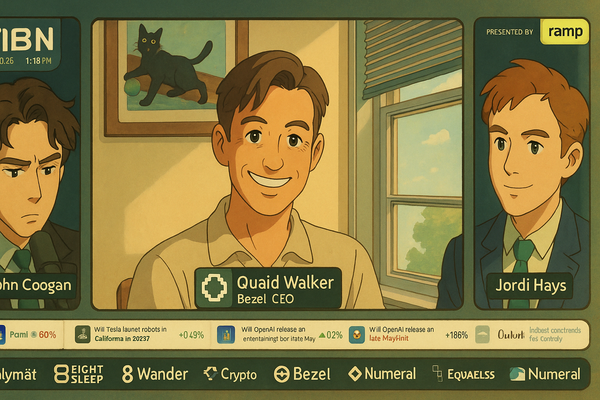Hard choices
Changs sucks

Hi. In today’s newsletter:
- The hard choices of change
- A conversation about the Washington Post’s turnaround plan
- Publishers’ performance marketing concerns
- Cannes cocktails and conversations
- New avenues for audience building
Hard choices
There’s a playbook for new leaders brought in to change organizations: 1. Listening tour; 2. Blue ribbon study of deficiencies; 3. Memo laying out a new strategy; 4. Organizational overhaul. 5. Low-grade civil war.
We are at stage four at The Wall Street Journal and the Washington Post. Will Lewis and Emma Tucker have undertaken substantial changes that will mark their tenures – and give clues as to how major newspapers can find their own distinct paths to sustainability against inevitable institutional resistance.
The question confronting both isn't all that different than most media companies: Why do we exist? For decades few media companies bothered to ask this question. These days, with increased competition from all quarters and a technological shift likely at hand that will upend business models, the question becomes required, even for publications with rich histories that still make money.
Reading between the lines, it’s clear Tucker felt the Journal’s metabolism and embrace of audience data to inform editorial were both lacking. Her “audience-first” mantra means focusing on deeper engagement of readers. In our recent conversation, she cited a stat the Journal has cited elsewhere to show this in action: a reduction of churn by 6%.
"I'm asking the newsroom to focus on engagement, not traffic, not clicks, but engagement. How long are people spending reading our journalism? How often do they come back to us?"
At the Washington Post, Lewis this week overhauled the newsroom, replacing the editor, Sally Buzbee, with his former colleague from The Telegraph, Robert Winnett, with former WSJ editor-in-chief Matt Murray stepping in to oversee the newsroom through the election before heading a third newsroom (alongside news and opinion) with a vague mandate of “service and social media journalism.”
Both leaders are dealing with blowback. Americans like to fetishize change, like failure, thanks to Silicon Valley. But one person's renewal is another's dislocation. The cuts at the Journal have rankled the union. At the Post, staffers are demanding to know why the top of the org chart looks like a 1950s Celtics team. Tucker’s assistant served as a human shield during a Post-It protest, only to have a particularly tall guy go top shelf on her.
Both the Journal and the Post need to thread a needle. Like all publications, they need to zero in on what makes them distinctive and pursue it relentlessly, leaving aside some ancillary news areas. And at the same time, they need to broaden their audience bases.
At the Journal, that means cutting in some areas to focus resources on Tucker’s vision of the Journal to stay true to its core as a business publication. Tellingly, in the midst of staff cuts, the Journal is embarking on a brand campaign that positions the Journal as synonymous with business issues. This positioning reflects the Journal’s position within Dow Jones, which has bulked up on B2B data assets that are simply better businesses.
At the Post, Lewis is separating out the hunt for new audiences to a new parallel operation. The Post will now have three editorial leaders, an organizational decision that disperses power. The core newsroom needs to improve habitual visits while Murray’s new operation looks for new audiences.
Making changes is in some ways harder at a publication like the Journal that is profitable. There’s an optics issue when on the one hand you have rolling incremental job cuts igniting Post-It protests and a multimillion-dollar ad campaign launching against the backdrop of Dow Jones reporting record profits. The counterargument is that you get ahead of change rather than wait.
Lewis is also in the awkward position of having the Post owned by the world’s fourth-richest person in Jeff Bezos. But rich people don’t stay rich losing money, and there’s ego at play, too. Lewis was sure to name the number: $77 million. That’s how much the Post lost. Another number: 50%. That’s the loss in traffic from 2020 to 2023. One more: 20%. That’s how many visitors read more than one story. The Post’s subscriptions business is in decline, and if not arrested, churn spirals are nasty. The pushback of three Pulitizers or various scoops doesn’t change this essential business reality. If you’re in the hits business, you better make sure its a steady stream, not a trickle
“We are losing large amounts of money,” he told the newsroom. “Your audience has halved in recent years. People are not reading your stuff. I can’t sugarcoat it anymore.”
House of Kaizen’s Matt Cronin joins me on this week’s episode of The Rebooting Show to assess the turnaround plan Lewis has put in place. We recorded the episode prior to the news of Buzbee’s exit. We dig into the importance of setting a North Star in the midst of organizational change, then get into the tactical shifts Lewis wants with tiered subscriptions and distinct approaches to core and non-core audiences.
Listen on Apple | Spotify | other podcast platforms
What worries publishers
We partnered with Permutive to survey 100 publishing revenue leaders to understand the state of their ad businesses. One finding that stuck out to me is that publishers have a broader challenge than the loss of the third-party cookie. They are losing share in the ad market to direct-response ad engines that have spread beyond tech platforms to an array of retail platforms. .
The Rebooting has a full agenda at Cannes, including private dinners, live podcasts and a cocktail party at a surf cantina for TRB members. Check out the full list of activities here, and submit your information for invitations.
If you missed last week’s online forum about new avenues for audience building with Newsweek’s Josh Autry, a360media’s Lorraine Goldberg and True Anthem CEO Chris Hart, you can still see a replay. Just register and you will get access to the hourlong session. We discuss the tactics and channels that are working for traffic acquisition right now and what’s not, as well as how the role of audience development is changing within publishing organizations. This was a great conversation. (Note: If you already signed up, you'll be asked for an access code to view the replay. The code is: #PKxsK.0)
Thanks for reading. Send me a note with your feedback by hitting reply or at bmorrissey@therebooting.com. Upgrade to a TRB membership for access to all content as well as invitations to in-person and virtual events.




